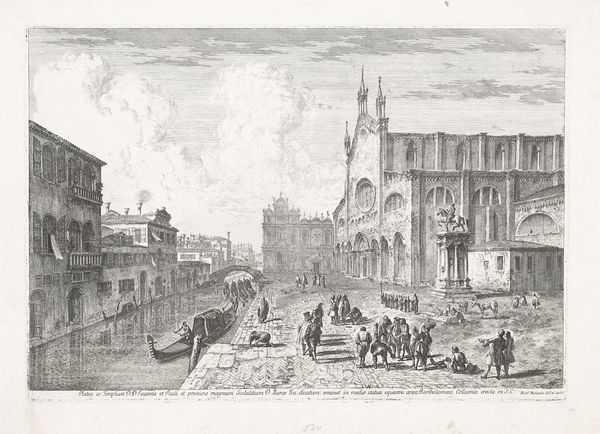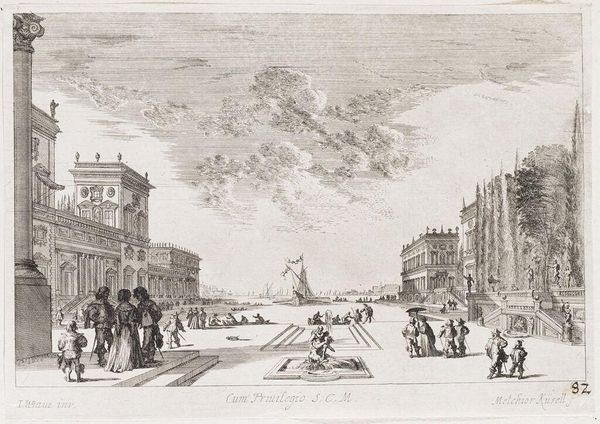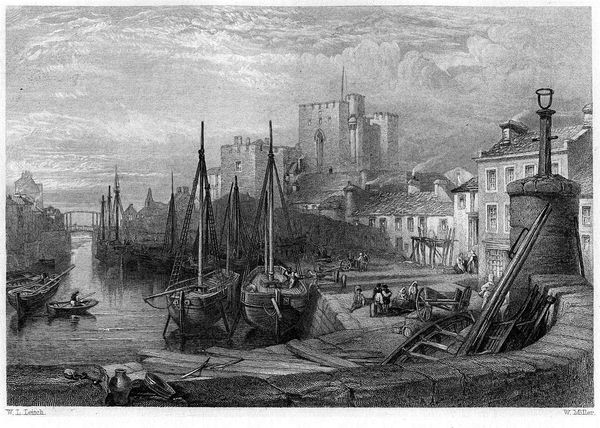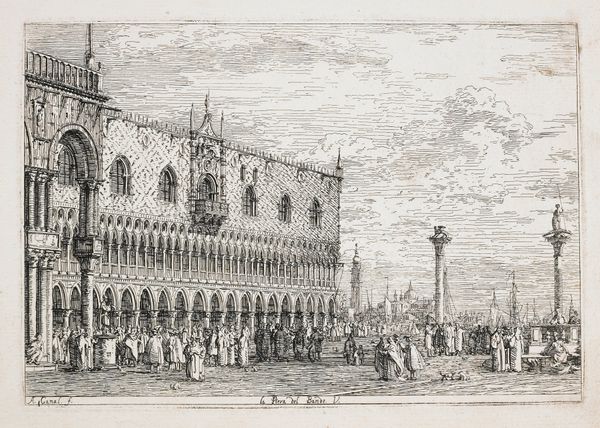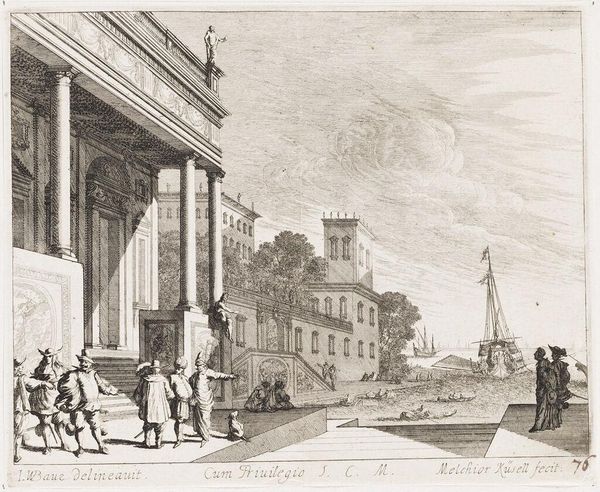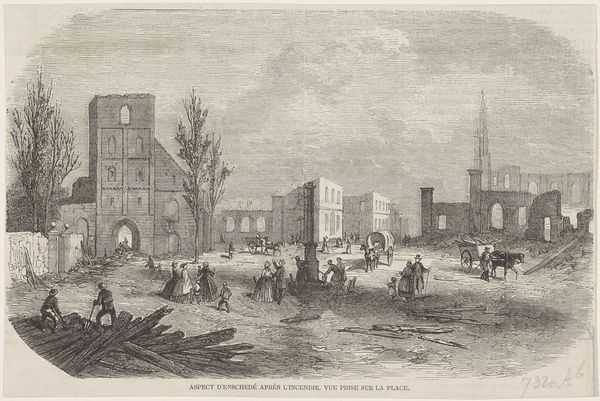
print, etching, engraving, architecture
#
venetian-painting
#
baroque
# print
#
etching
#
landscape
#
geometric
#
cityscape
#
engraving
#
architecture
Dimensions: height 311 mm, width 450 mm
Copyright: Rijks Museum: Open Domain
Curator: Before us is Michele Marieschi’s "Campo Santi Giovanni e Paolo te Venetië", dating to 1741. This print, using etching and engraving techniques, captures a bustling Venetian cityscape and is held at the Rijksmuseum. Editor: It's quite striking, almost theatrical. The way the light falls across the square, illuminating the church facade... there’s a definite sense of importance attached to the scene. A monument, surely, in the center? Curator: The monument is of Bartolomeo Colleoni, an Italian condottiero. The engraving beautifully depicts the detailed brickwork of the Basilica di San Zanipolo and surrounding structures, revealing much about 18th-century Venetian architectural practices. Notice the way Marieschi employs line variation. It gives depth to what could be a flat, representational image. Editor: I'm immediately drawn to the gondolas, symbols of Venice itself, smoothly gliding through the waters in their traditional forms. There are lots of geometric patterns within the etching—consider how they interplay with the clouds and building facades. One could argue that the composition presents Venice as a place of geometric precision, carefully ordered even within the bustling, quotidian environment. The activity itself carries a symbolic load; Venice, a place of trade, of human interaction. Curator: I agree. These details illuminate social class. The labouring figures carrying goods on the square tell a very different story to the image conveyed by gondolas. Consider the conditions under which this work was created, reproduced as prints accessible beyond the wealthy elite. Marieschi’s craft mediates the perception of Venetian society. Editor: Absolutely. What resonates for me is how it takes on cultural meanings even now. The iconic church. That equestrian statue—those are emblems we still associate with Venice's layered past. Seeing them evoked with this level of detail offers an enduring reminder of history. Curator: Seeing how the process of producing such prints makes such iconic emblems available to a wide audience provides some food for thought about access, knowledge and dissemination. Editor: Definitely. And perhaps even challenge the canon too. Thinking about Marieschi’s choices around how and what to highlight gives a very different inflection compared to contemporary landscapes and cityscape painters from other cultural spheres. Curator: It has been wonderful exploring how materials and symbolism blend. Editor: Yes, this etching does more than capture a likeness; it preserves a memory, in both craft and iconography.
Comments
No comments
Be the first to comment and join the conversation on the ultimate creative platform.
